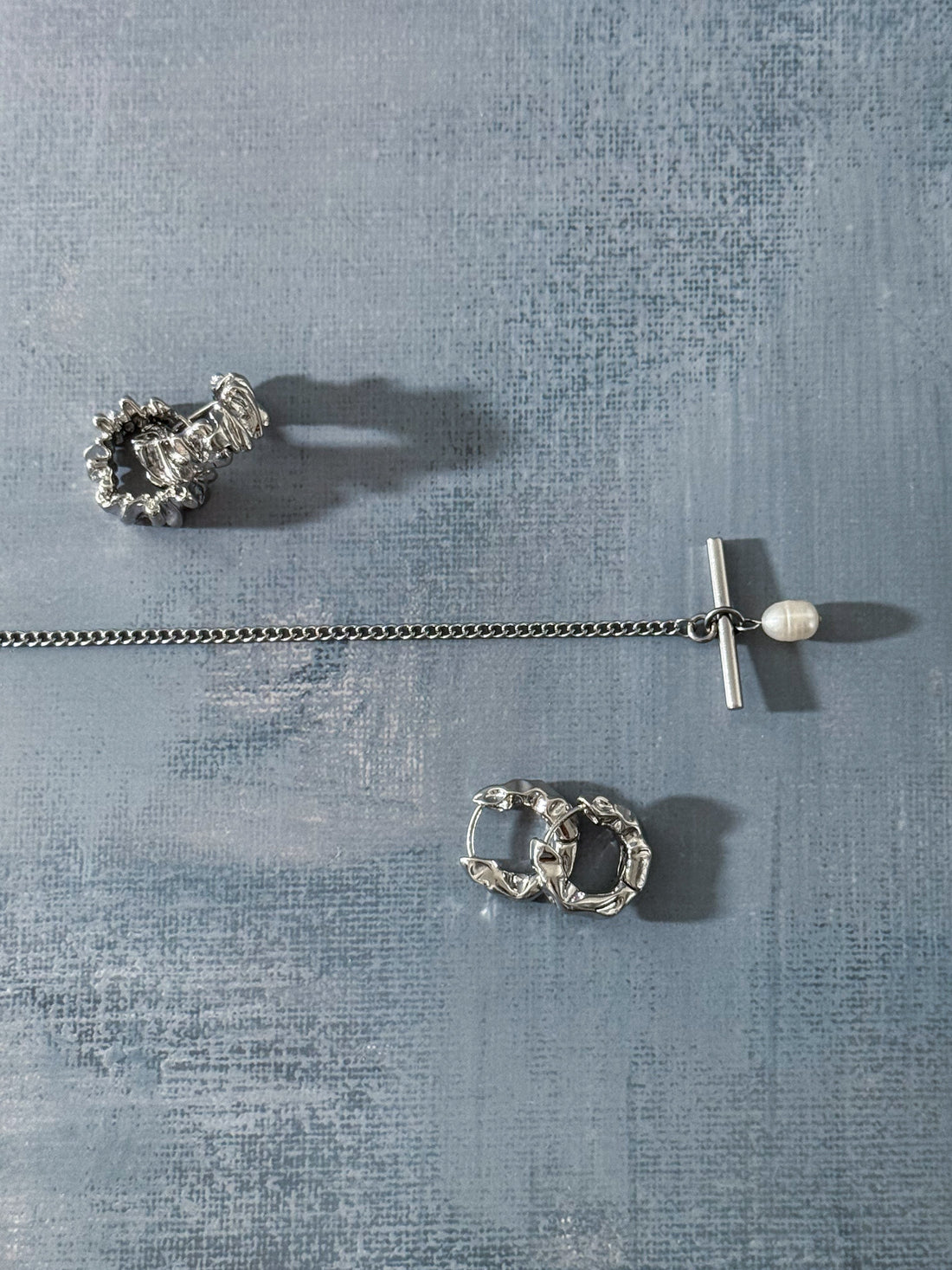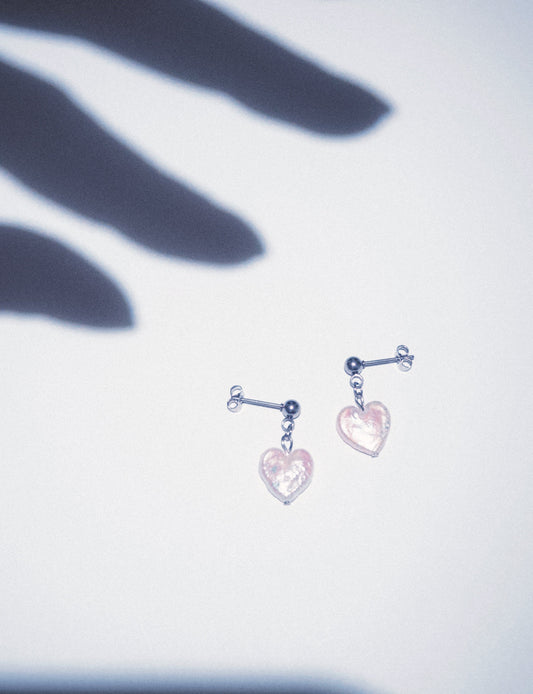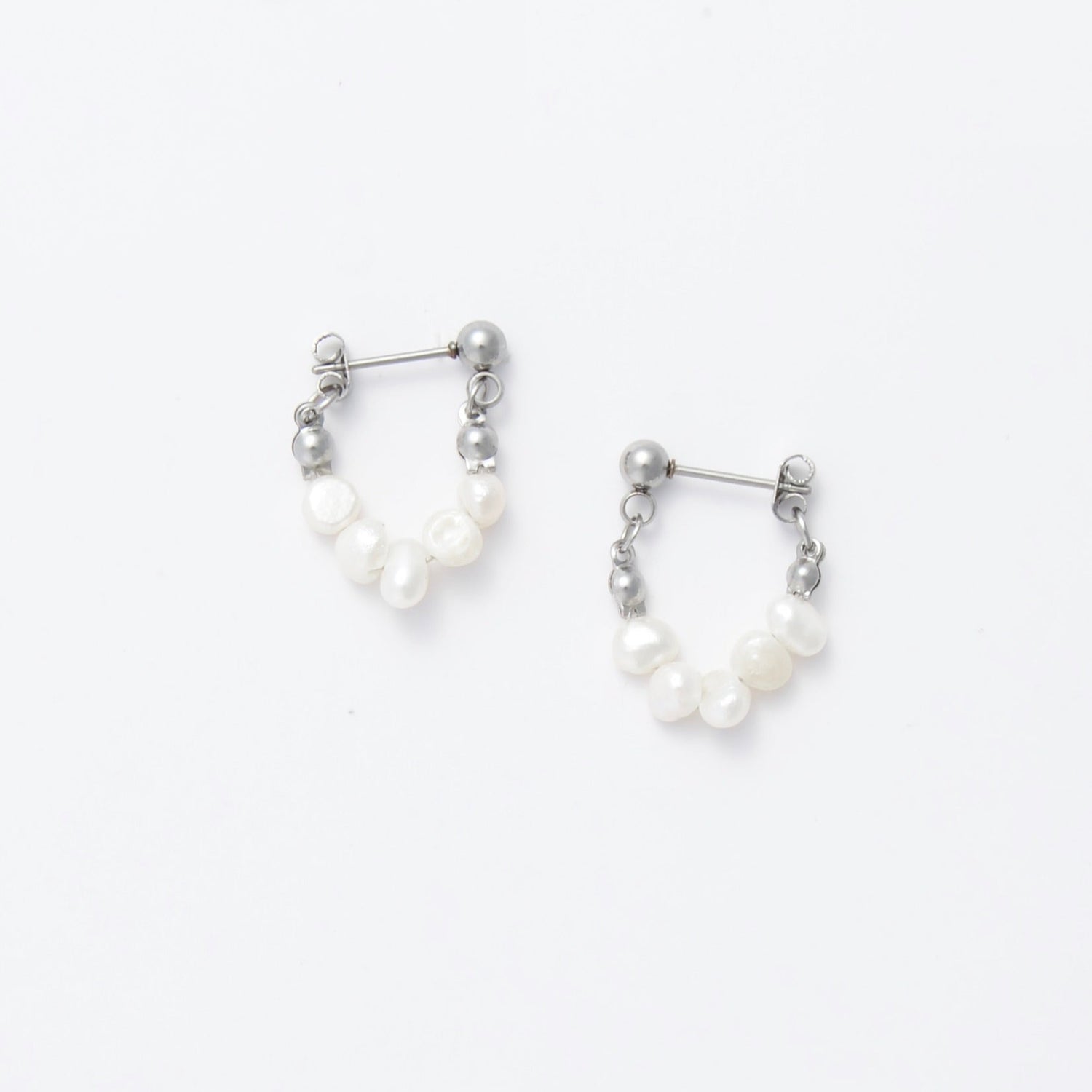
How to Start a Jewelry Collection: Begin With What You Already Wear
There’s a little girl at the beginning of this story. The one who was gifted a small gold ring over a decade ago by her grandmother. That was her first piece of jewelry she's ever owned, and she wore this ring every day for the coming years, never taking it off once.
If you don’t know this little girl yet, you can meet her here. But even if you haven’t, you might recognize her in yourself in the way your inner world holds onto small things that feel like everything.
Jewelry begins like this sometimes. Not chosen, and often unexpected.
Your collection has already begun. Let's trace it back to the piece you always reach for.
✧ I. Begin Where You Are

This is the quiet beginning of your jewelry collection — a personal jewelry style shaped not by trend, but by instinct.
You don’t need to reinvent yourself to begin.
A jewelry collection doesn’t start with something new. It begins with what’s already close to you.
Maybe it’s the earrings always left out on your dresser. The chain you sleep in, swim in, forget is even there until it catches the light. These pieces say more about you than you realize — soft declarations of your style, your rhythm, your rituals.
So let's begin:
- To understand where you are, gather the jewelry you already have.
- Not just what you love. But also what you’ve tucked away. What’s been gifted, passed down, or simply left behind in the folds of time.
- Spread them out on something soft — a piece of fabric, a notebook, a linen napkin.
Let them breathe in the light. - Then take a quiet moment. Look at them as a whole — not to judge, but to notice.
- Take mental notes such as:
-
- Which pieces do you wear most often? These are your anchor pieces.
- Are there common materials or finishes (gold, silver, pearls, beads)?
- What shapes or silhouettes appear again and again?
- Are you drawn to delicate, subtle things — or bold, sculptural forms?
- Which ones feel like “you”? Which ones never quite have?
Your patterns will reveal themselves in time — not through rules, but through feeling.
✧ II. Organize Them into Categories

Sort your jewelry into categories that are intuitive you whether that is by color, material, occasion or others. As the little girl in the story grew up into a young professional and began her own collection, her jewelry naturally sits in an admittedly messy pile, often tangled, but still intentionally organized. Let her emotional categories help you set the framework for your collection.
- Everyday Wear: pieces you reach for without thinking. The ones that live on your dresser or hang within easy reach. These might include your go-to hoops, the chain you never take off, or rings that feel like second skin.
- Memory Pieces: full of meaning, even if rarely worn. These may live in a hidden jewelry box, kept safe more for their emotional weight than daily use. A bracelet from someone you no longer speak to. A necklace from a milestone moment.
- Aspirational: pieces you love but rarely wear. The ones that light something up in you, but never quite make it out the door. Often beautifully bold or uniquely shaped, waiting for the right mood or outfit.
- Color Companions: pieces that come alive with specific clothing colors or necklines. Necklaces you only wear with white, earrings that pop best against navy — these choices are instinctive and visually informed.
- Occasions: pieces you wear for certain events. Pearl necklaces for galas, metal chains for everyday errands, statement pieces for parties.
- Not Me (Anymore): gifts, mismatches, or versions of yourself you’ve outgrown. Still loved for what they represent, even if they no longer belong on your body.
This emotional sorting is less about structure and more about story — and no story is perfectly tidy.
✧ III. Reflect on What's Missing
Now that your jewelry is sorted into categories that speak to you, this step helps you identify jewelry essentials and emotional gaps as part of how to build a jewelry collection intentionally. As you go through each category, envision what piece can elevate each category with these questions:
- Are the pieces gold or silver toned? Or are they multicolored?
- How many necklaces, earrings, bracelets, anklets, other accessories are there in this category? Which ones are you missing?
- Is there variety in shape or texture? Or are they all similar?
- In the future, would you like some options of anchor pieces in this category?
The same woman — the little girl, now grown — has been evolving her collection.
When she looks at her Everyday Wear, she notices:
- She owns a good mix of gold and silver-toned necklaces, and likes switching them up based on mood or outfit.
- She wears 8 necklaces in regular rotation, two pairs of earrings, and one bracelet — but no anklets. Now that it’s summer, she’s curious to try one.
- Most pieces are chains. She loves their timelessness, but lately she’s craving a pop of color or something textural to bring warmth and contrast.
Summary: Her Everyday Wear is strong in rotation and tone, but light in texture and color. She doesn’t need to start over — she just needs one or two pieces to deepen what’s already working, starting with an anklet and vibrant earrings.

Every collection is different depending on the person. This might mean you like necklaces more and need more necklaces in your rotation. This depends on what you define a completed look mean. For example, this might mean stacking two necklaces, two pairs of earrings, and occasionally one bracelet for a complete look. Having a rule of thumb defined by you on what jewelry you like to wear together to feel complete, can also help you determine what is the next piece you can begin looking for.
Your collection has already begun. Let's trace it back to the piece you always reach for.
✧ IV. Discover Your Style Through Reflection & Moodboarding

Now that you've seen what you wear and what you don’t, it’s time to listen deeper. Let's explore your jewelry style visually, a foundational practice in slow fashion jewelry, to the colors you're drawn to. The moods you dress in. The materials that feel like you.
Style isn’t built overnight. It’s revealed — through repetition, emotion, memory, and mood. Let this be the part where you look outward, gently, to see what calls you in.
1. Make a Moodboard:
Now, let your intuition lead. Open a Pinterest board, a saved folder, or even a blank page. Begin collecting:
- Jewelry styles that make your heart pause
- Clothing you’d wear with those pieces
- Art, nature, interiors, or color palettes that speak to you
- Anything that stirs a quiet yes inside you
Don’t aim for cohesion. Just gather. In time, patterns will begin to emerge — soft lines, warm gold, misty pastels, asymmetry, symmetry, shadow, glow.
2. Let the Patterns Speak:
Once you’ve gathered 20–30 images, step back and observe:
- Are you drawn to bold pieces or minimal silhouettes?
- Do the images feel more sculptural, romantic, or modern?
- Do you see repetition in layering, stones, shapes, or finishes?
Match these visual impressions to what you’ve already discovered in your jewelry collection.
3. Style Lives in Contrast:
If something surprises you — a bold cuff, a splash of red, a glossy pearl — that doesn’t mean you’re inconsistent. It means you're complex.
Use your moodboard to name your contrasts, not erase them. You might be grounded but oceanic. Minimal but mythic. Structured but fluid. That’s your signature. Not a fixed style, but a living language.
Explore our Jewelry Archetype Guide
✧ V. Curate Your Wishlist with Feeling, Not Urgency
Use a wishlist to guide future choices rooted in personal jewelry style, not urgency. Now that you’ve seen what you have and what you long for, you can begin to collect with care. Not from trend. Not from pressure. But from a feeling that stays with you.
Start a soft wishlist — something you keep in your notes app, a page in your journal, or even tucked beside your jewelry stand. Let it be shaped by mood, memory, color, and contrast.
Break it down gently. It could help to prioritize which pieces you would like to buy first into these categories:
- Now: Pieces that fill a clear emotional or functional space. A second pair of earrings for rotation. A chain to layer with your favorite pendant. A hint of softness where everything else is clean.
- Soon: Pieces that stretch you slightly — boldness, texture, or color you’ve always been curious about. The kind of piece that feels like a version of you you’re growing toward.
- Someday: Dream pieces. A locket you want to pass down. A stone that reminds you of a specific sky. A sculptural cuff for the version of you who throws her shoulders back and doesn’t apologize.
This isn’t a shopping list. It’s a gathering list. A way to collect not just jewelry, but intention.
✧ VI. Closing: The Story Has Already Begun
Whether you’re defining your personal jewelry style or discovering how to build a jewelry collection from what you already own, the story begins from within.
Your jewelry collection didn’t begin with a purchase.
It began the first time you reached for something that felt like you.
Maybe it was a ring from someone you love.
Maybe it was something small you bought with your own money.
Maybe it was a necklace you wore until the clasp wore thin.
What you wear holds memory.
What you keep tells a story.
And what you choose next — that’s where the story continues.
You don’t need to chase more.
You just need to listen to what’s already speaking.
Begin with one piece. Let it help guide you.
✧ Explore our Jewelry Archetype Guide
✧ Or start curating with Glass Balloon’s collections







